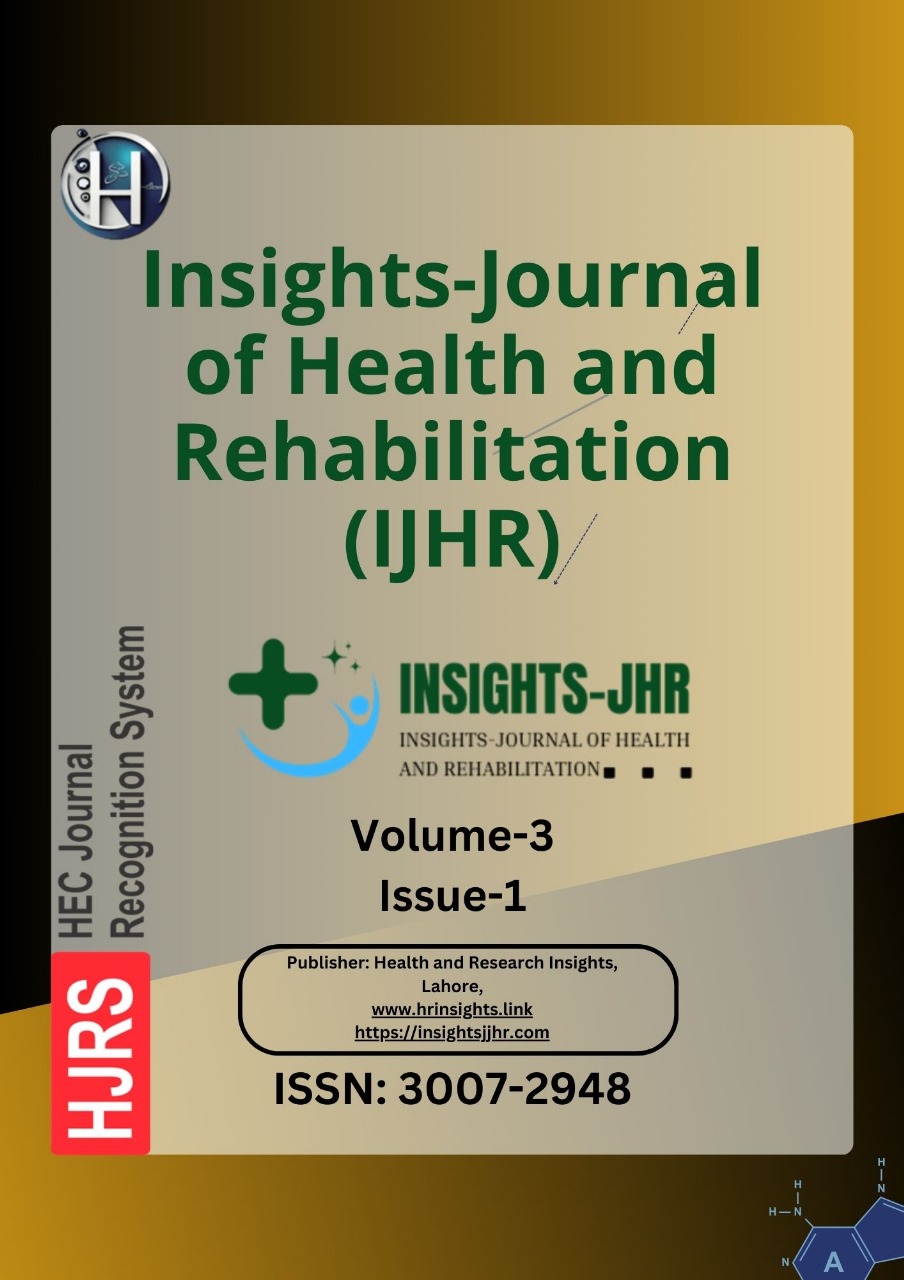COMPARISON OF EFFICACY OF NEUBULIZATION BETWEEN 3% HYPERTRONIC SALINE AND NORMAL SALINE IN ACUTE BRONCHIOLITIS
DOI:
https://doi.org/10.71000/cp7d5m28Keywords:
Acute Bronchiolitis, Airway Obstruction, Hospitalization, Hypertonic Saline Solution, Nebulization, Oxygen Therapy, Respiratory DistressAbstract
Background: Acute bronchiolitis is a common lower respiratory tract infection in infants and young children, primarily caused by the respiratory syncytial virus (RSV). It leads to airway inflammation, mucus hypersecretion, and obstruction, resulting in respiratory distress. Despite supportive care being the mainstay of management, nebulized hypertonic saline has gained attention for its potential to improve airway clearance, reduce airway edema, and enhance mucociliary function. This study compares the efficacy of 3% hypertonic saline versus normal saline in the treatment of acute bronchiolitis.
Objective: To evaluate and compare the efficacy of nebulized 3% hypertonic saline and 0.9% normal saline in improving clinical outcomes among children diagnosed with acute bronchiolitis.
Methods: This randomized controlled trial (RCT) was conducted at the Department of Paediatrics, Sughra Shafi Medical Complex, Narowal, over six months from November 14, 2022, to May 14, 2023. A total of 100 children aged 2 months to 2 years with a clinical diagnosis of acute bronchiolitis were enrolled. Patients were randomly assigned to either Group A (nebulized 3% hypertonic saline) or Group B (nebulized 0.9% normal saline). The primary outcome was the change in clinical severity scores, measured using the Respiratory Distress Assessment Instrument (RDAI) at different time intervals (baseline, 12, 24, 48, and 72 hours). Secondary outcomes included oxygen saturation levels, duration of oxygen therapy, length of hospital stay, recovery rates, and hospital readmission. Data were collected using standardized data forms and analyzed using IBM SPSS, version 27.0. Statistical significance was set at p < 0.05.
Results: Group A comprised 31 (62%) males and 19 (38%) females, while Group B had 27 (54%) males and 23 (46%) females. Upon admission, Group A had a slightly higher mean oxygen saturation level (92.79 ± 1.41) than Group B (92.20 ± 1.54, p = 0.049). At discharge, oxygen saturation significantly improved in both groups, with Group A showing higher levels (p < 0.001). Clinical severity scores were consistently lower in Group A compared to Group B at 12 hours (6.74 ± 0.56 vs. 7.54 ± 0.65), 24 hours (3.90 ± 0.65 vs. 4.82 ± 0.60), 48 hours (2.32 ± 0.55 vs. 3.40 ± 0.61), and 72 hours (1.34 ± 0.56 vs. 2.26 ± 0.63) (p < 0.001 for all). The duration of oxygen therapy was significantly shorter in Group A (13.88 ± 2.89 hours) compared to Group B (26.30 ± 2.31 hours) (p < 0.001). Rapid recovery within 72 hours was achieved by 94% (n = 47) in Group A compared to 38% (n = 19) in Group B (p < 0.001). Group A had a significantly shorter hospital stay (62.50 ± 11.57 hours) than Group B (76.40 ± 11.22 hours) (p < 0.001).
Conclusion: This study demonstrates that nebulized 3% hypertonic saline is more effective than normal saline in managing acute bronchiolitis in children. Patients treated with hypertonic saline exhibited significantly shorter hospital stays, faster recovery rates, improved oxygen saturation, and lower clinical severity scores. These findings suggest that 3% hypertonic saline should be considered a preferred treatment option for acute bronchiolitis in pediatric care.
Downloads
Published
Issue
Section
License
Copyright (c) 2025 Aqsa Faiz Faiz, Nida Siddiquee, Abdul Rehman Akram, Amir Jalal (Author)

This work is licensed under a Creative Commons Attribution-NonCommercial-NoDerivatives 4.0 International License.







